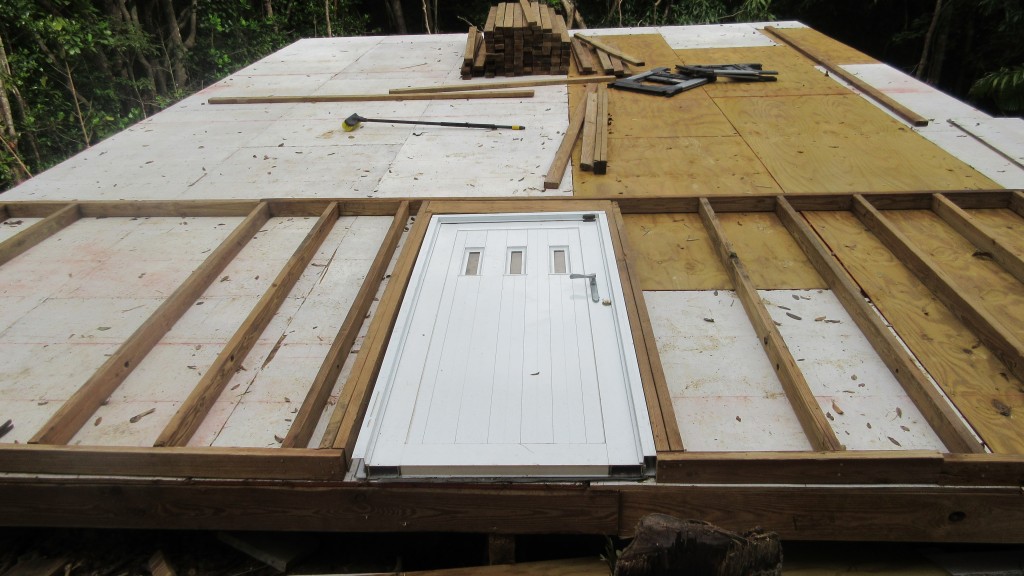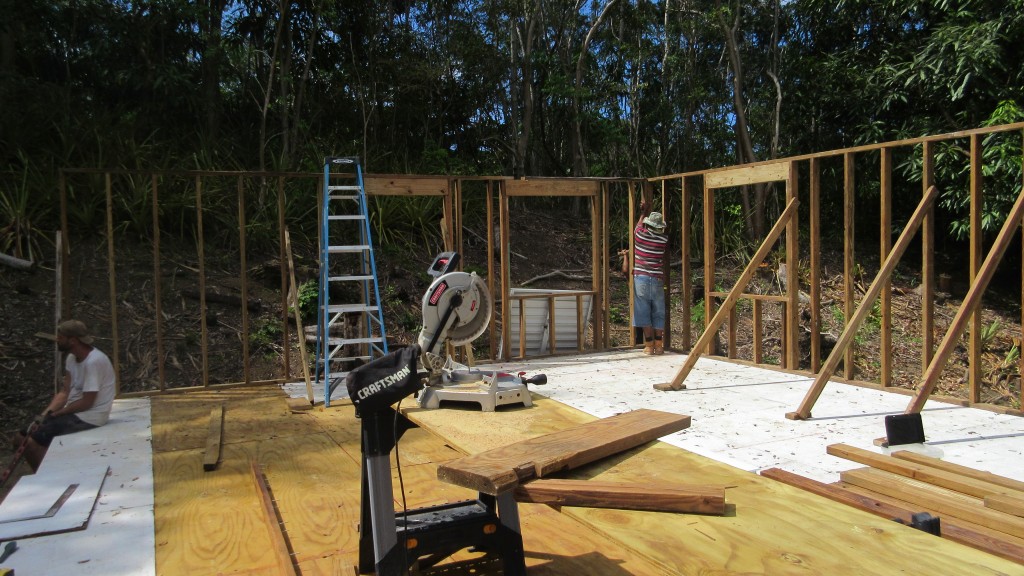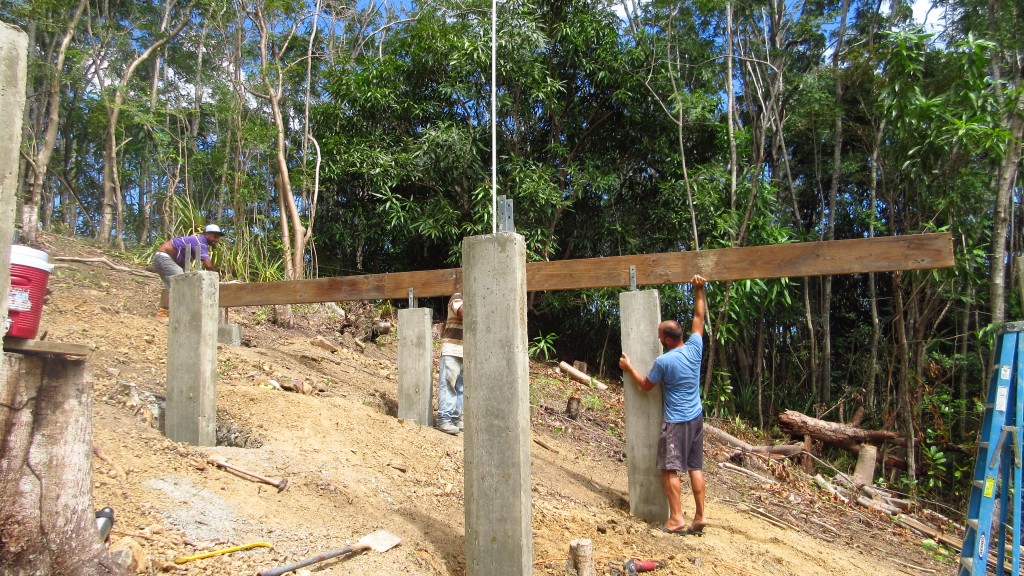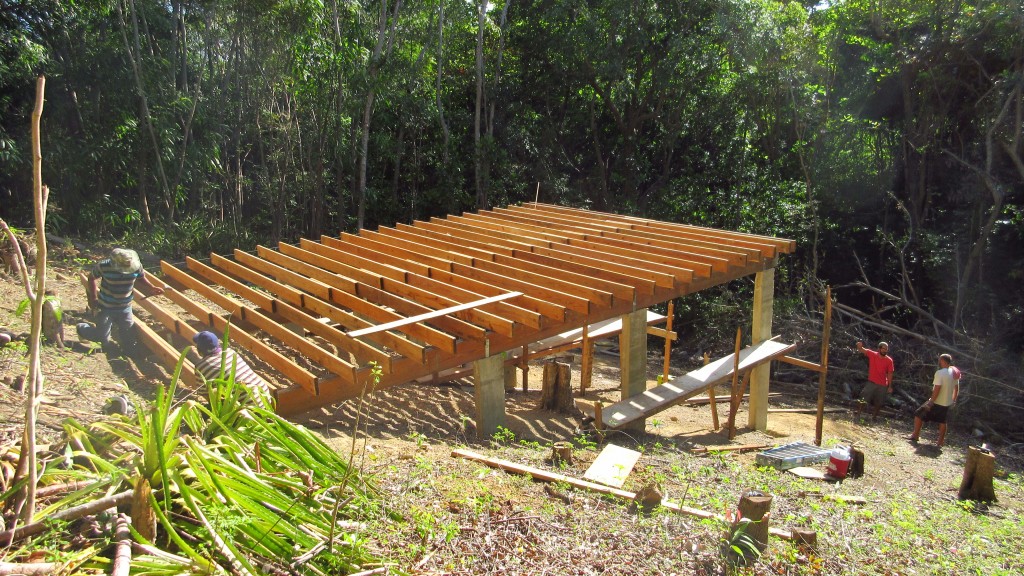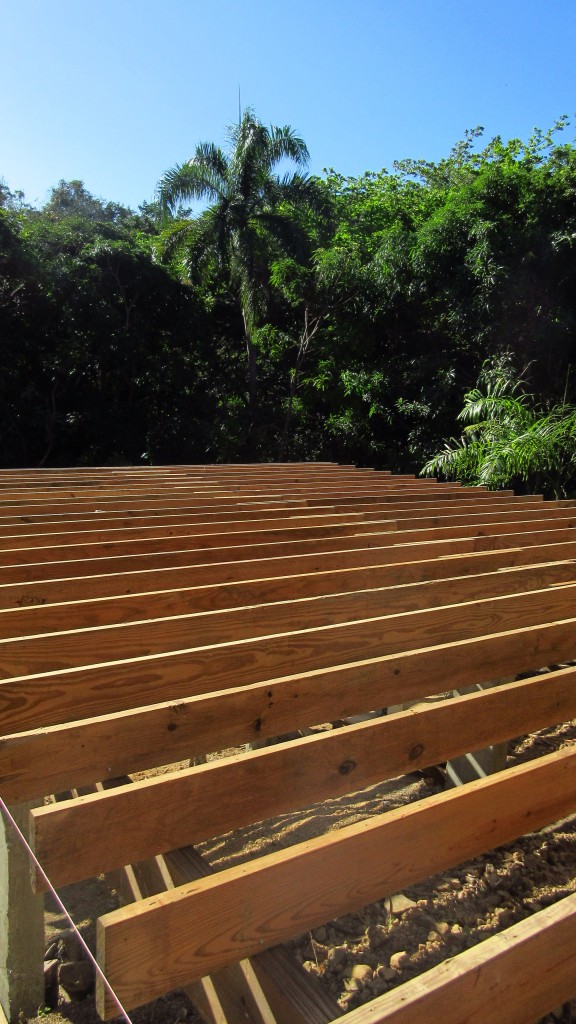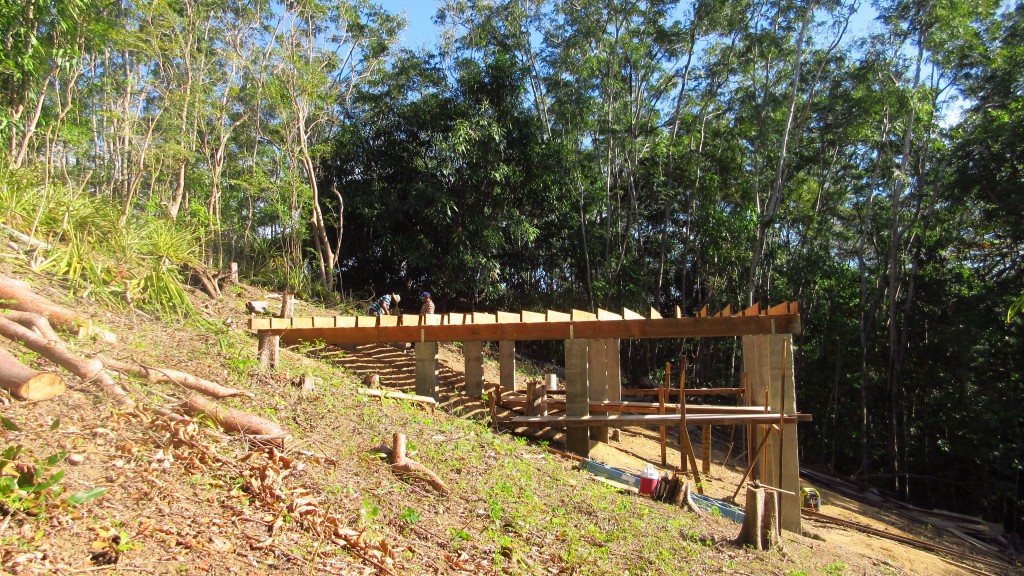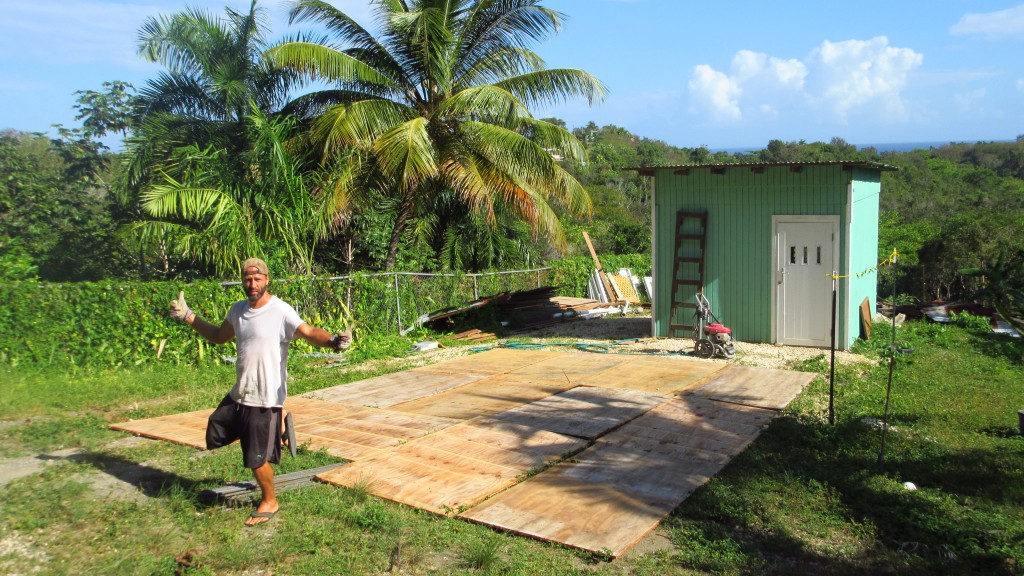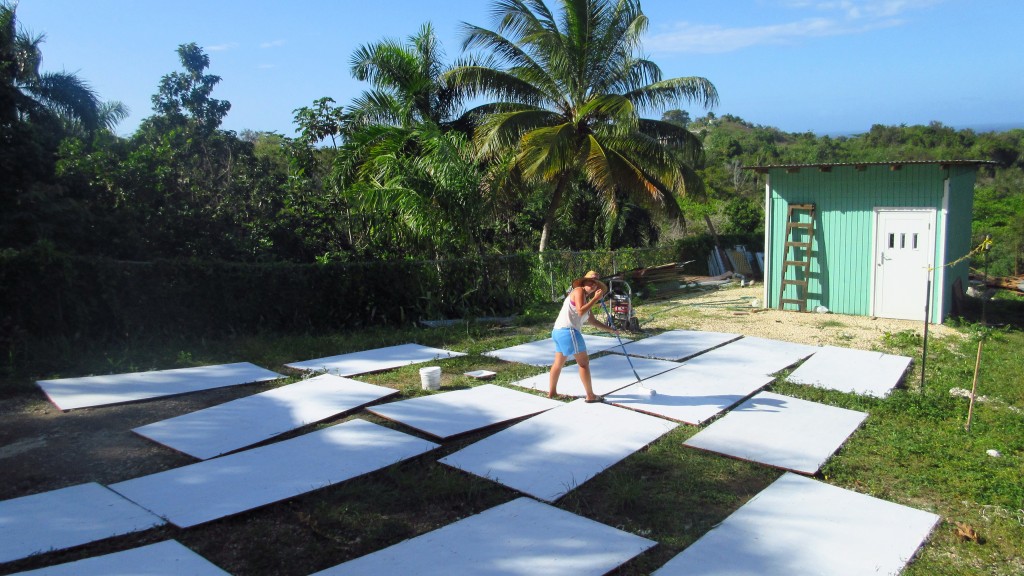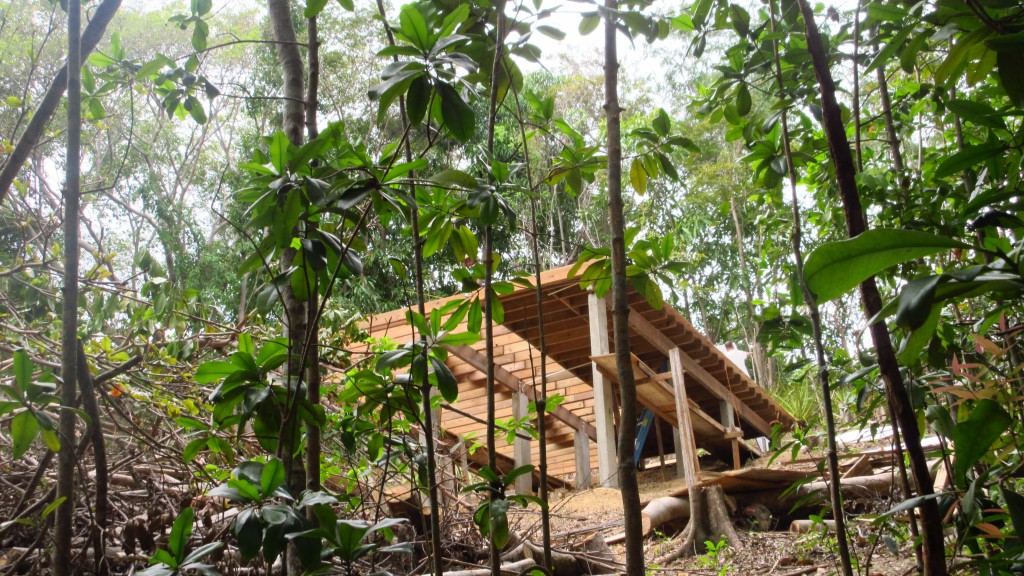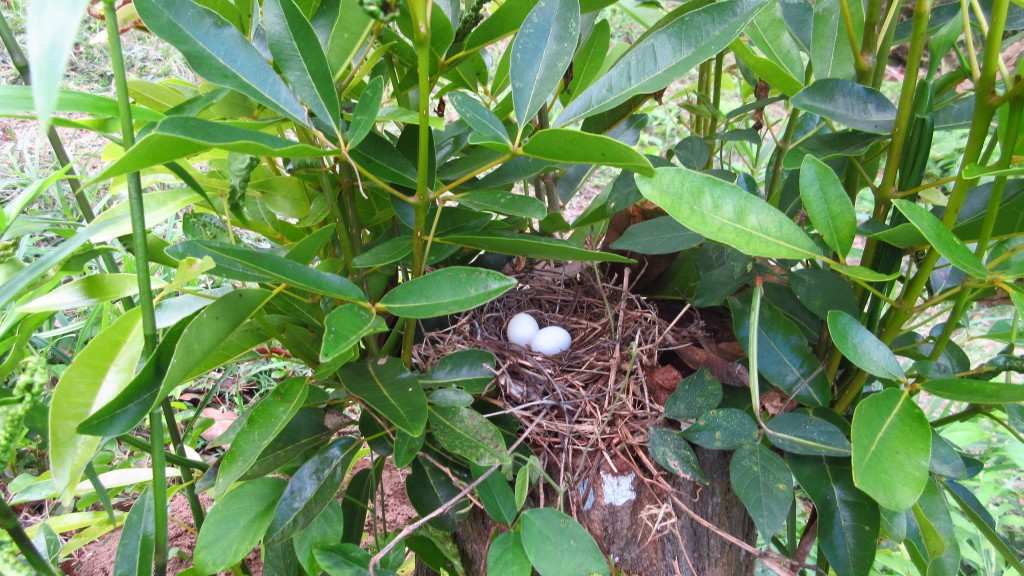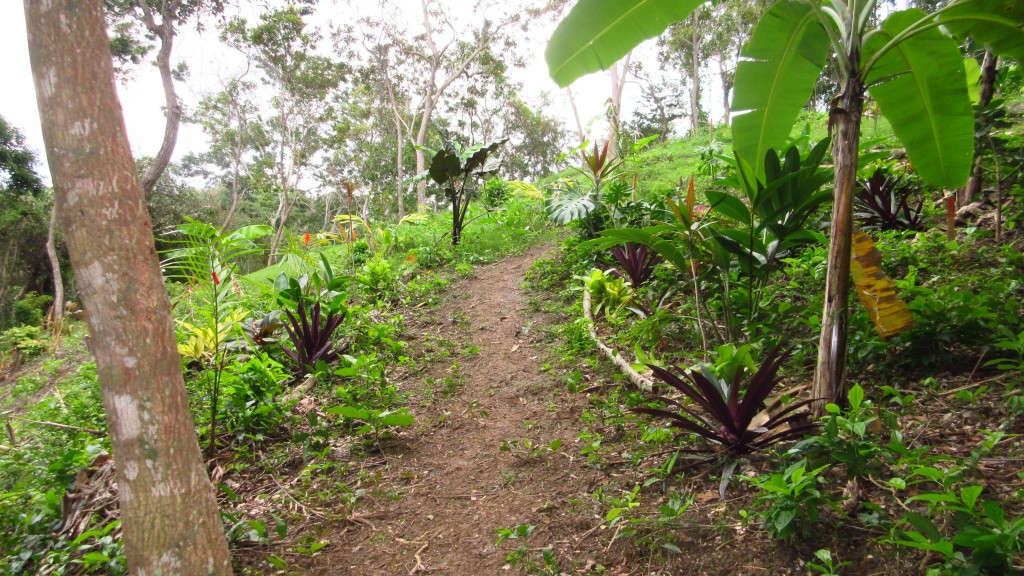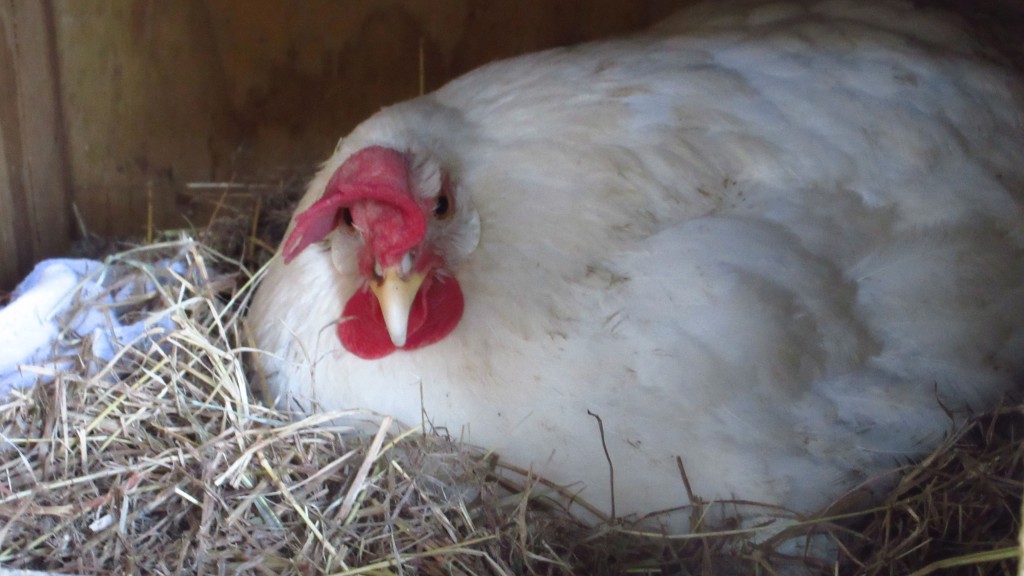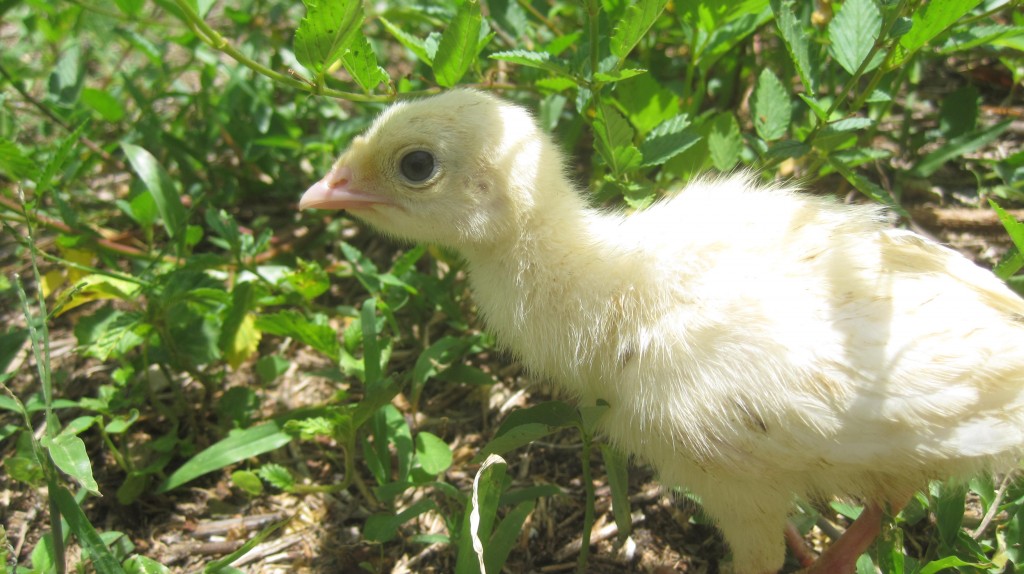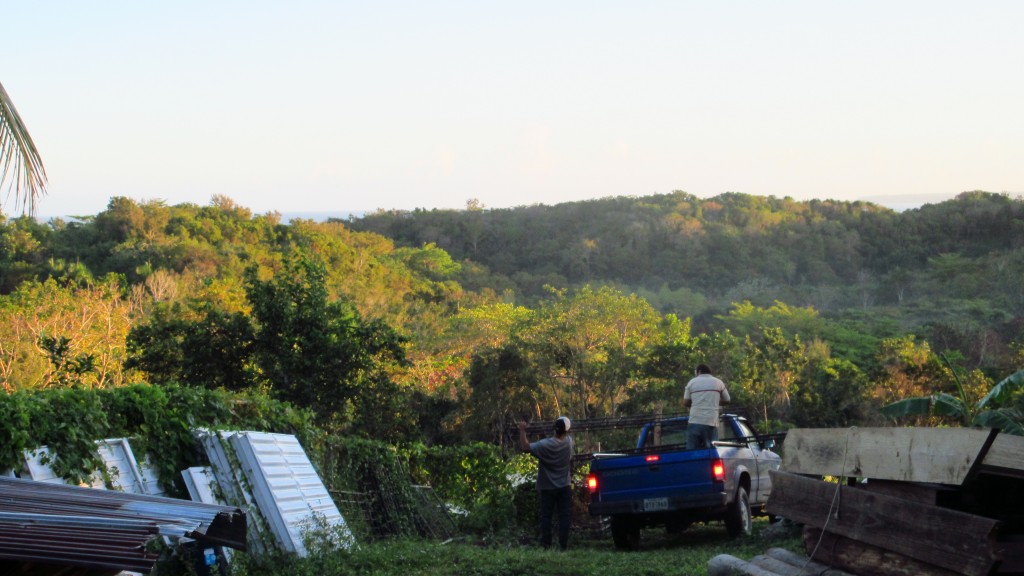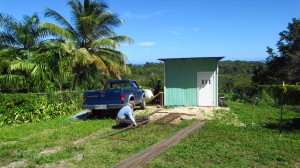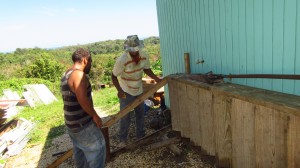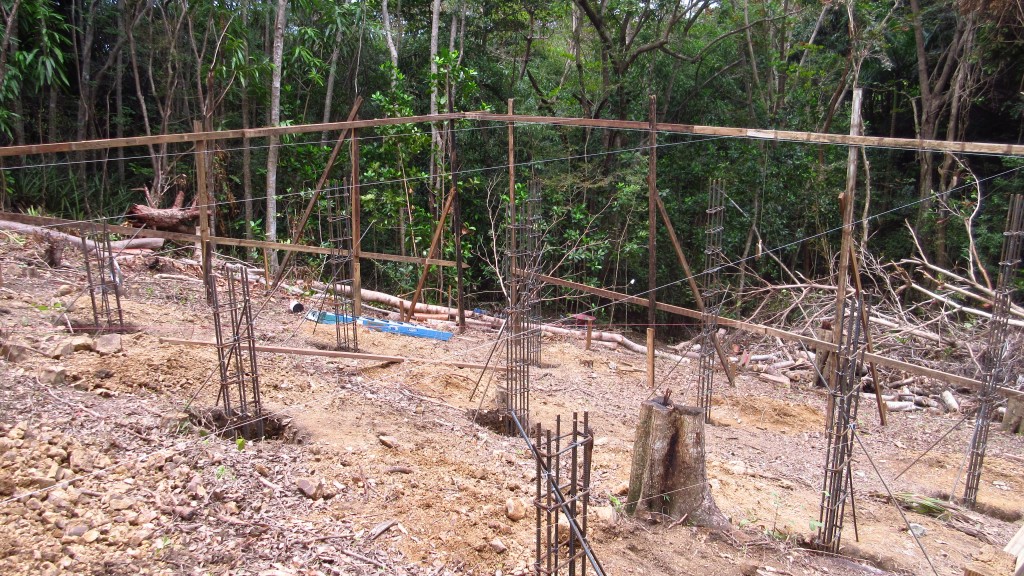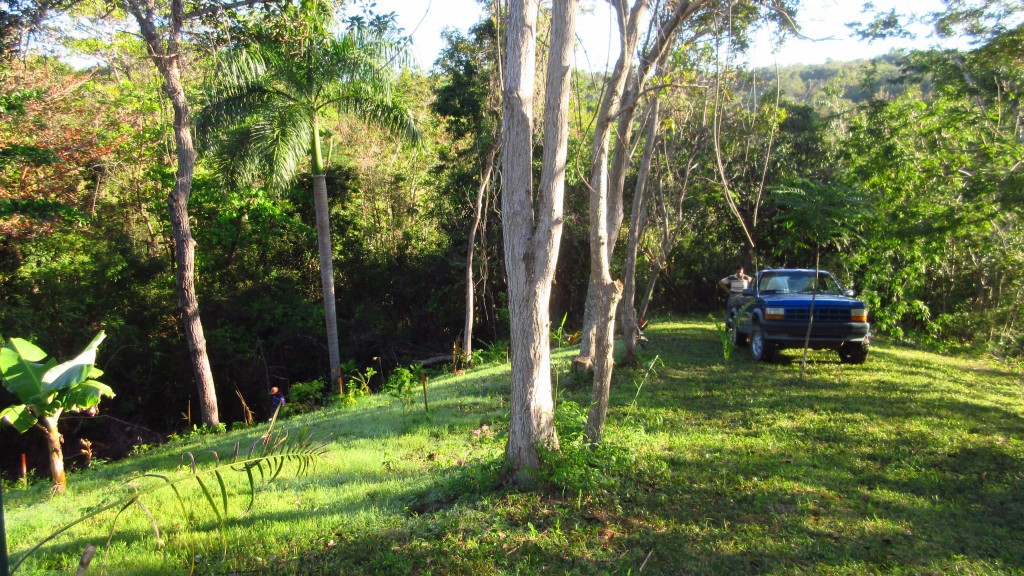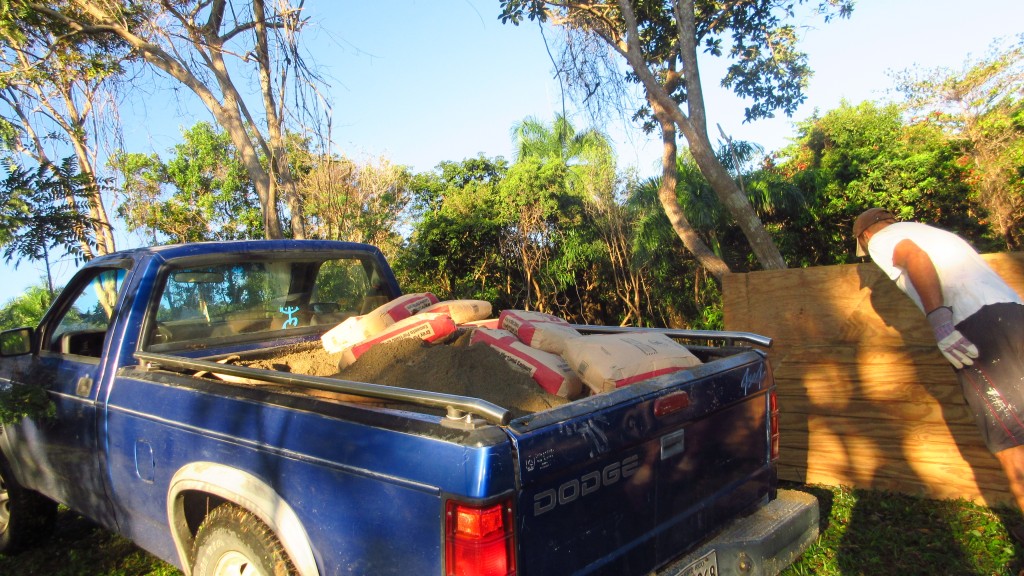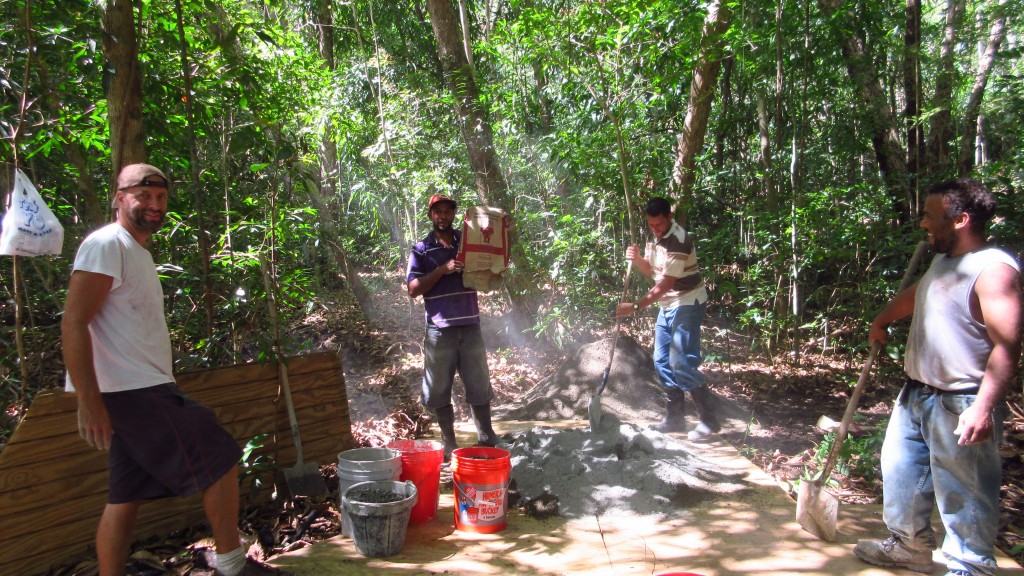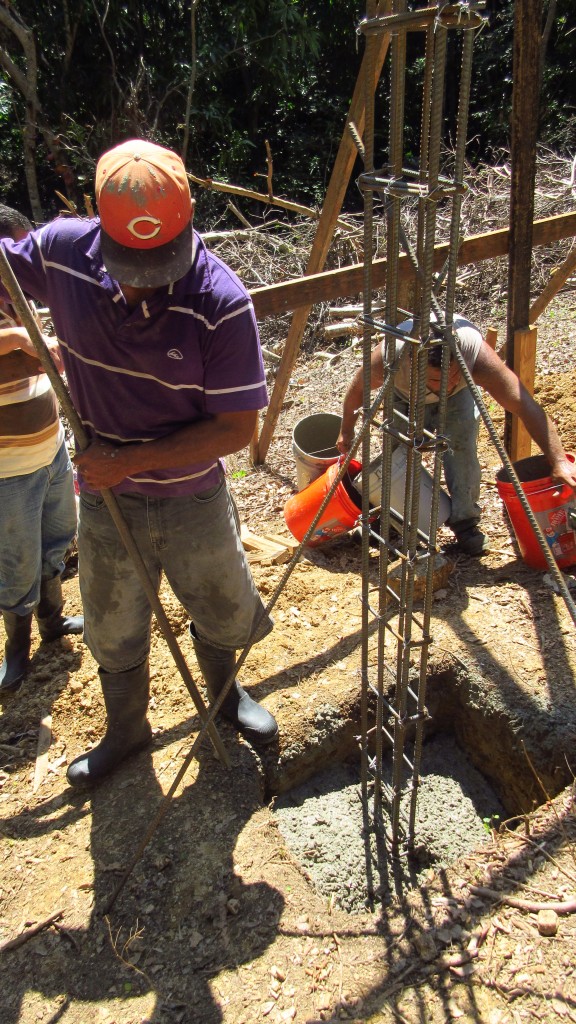We are at the phase of the cabin project where we can really see the shape that the house is taking. This week we began framing the walls and digging the “pozo.” Pozo means well, but in this case, it is the word they use for septic tank. This hole has to be at least 6 feet in the ground, 6 feet wide and 6 feet in length. Below about 2 feet, it is rock hard soil. And they are digging by hand. In the full sun. Yah. There are some worn out guys by the end of the day.
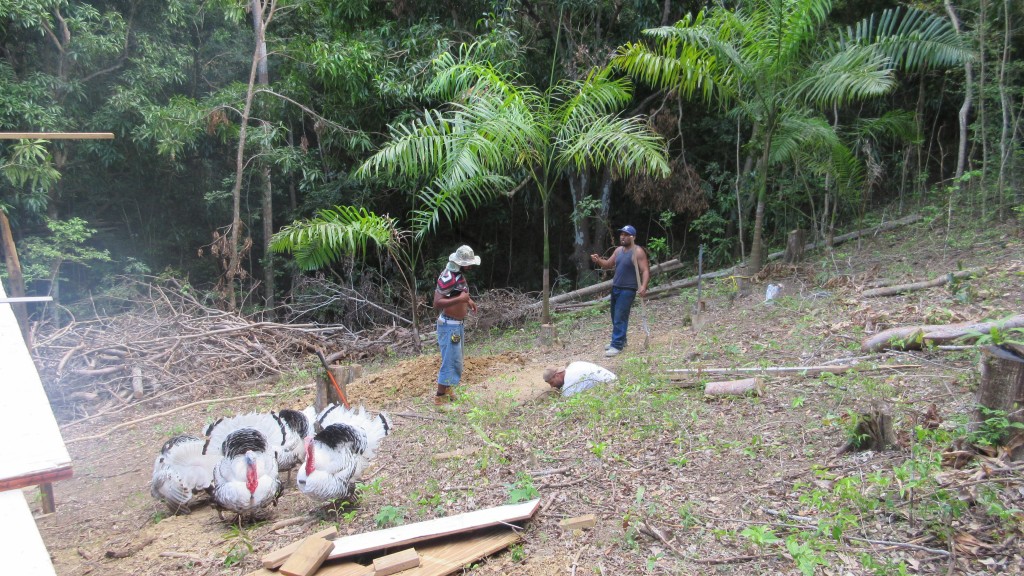
Britton and the guys take turns digging and removing the dirt for the septic
Before we even started these tasks, Britton installed all the hurricane clips beneath the house as well as brought over and powerwashed nearly all of the 2x4s. Between him and me, I think we probably washed about 200 pieces of wood, and some of them really needed it.
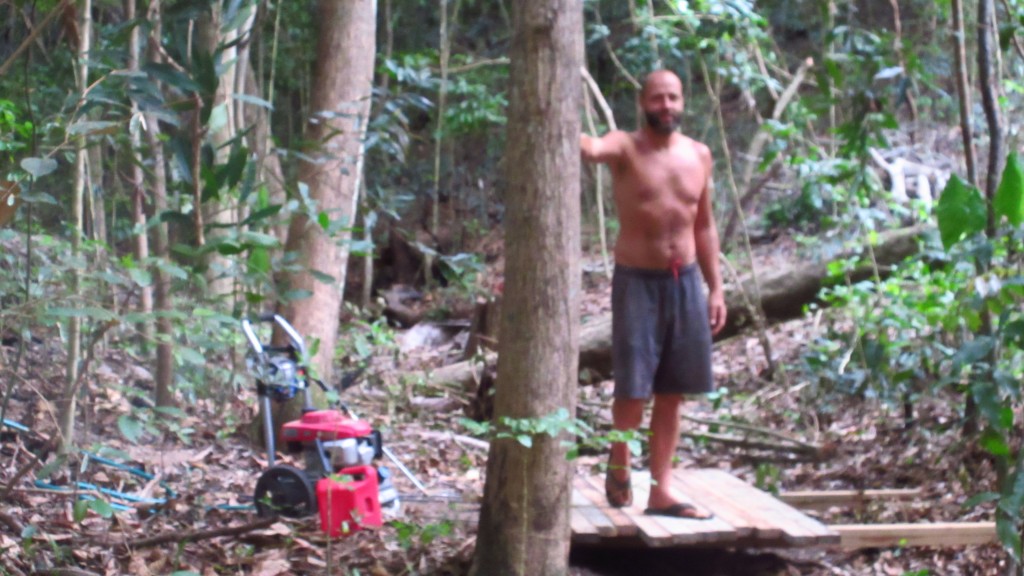
Britton pauses during powerwashing (sorry it’s a little blurry)
This is such a major project it quickly becomes exhausting. The guys often work straight through in the hot, blazing sun. Since we had to clear the area before we could build, it is just roasting without shade. The good thing is that we think it is going to be an excellent candidate for solar power.
Every single thing that you see in these pictures was brought over by hand through the jungle up and down slick slopes under and over trees and vines. I don’t think anyone would deny that we really are a team of go-getters with can-do attitudes (but they may say we are a little crazy too 🙂 )!
We are still deciding on a few things like siding (there is really only one choice at any ferreteria: T-111 siding -but we would prefer something else, windows -Miami shutters (Air Masters) must make up 90% of the market here so again not much choice in the matter unfortunately, and we can’t find any rolls of insulation anywhere. Not that we really need insulation for temperature reasons (there will be no heating or air conditioning inside) but we would like it in order to fill the cavities so that bees or bats won’t want to once again take up residence inside. These are fairly minor issues, they just make our days “off” seem like endless scavenger hunts with promising leads, but all trails point to the same limited choices (anyone with any suggestions?). Cést la vie in Island Construction.

